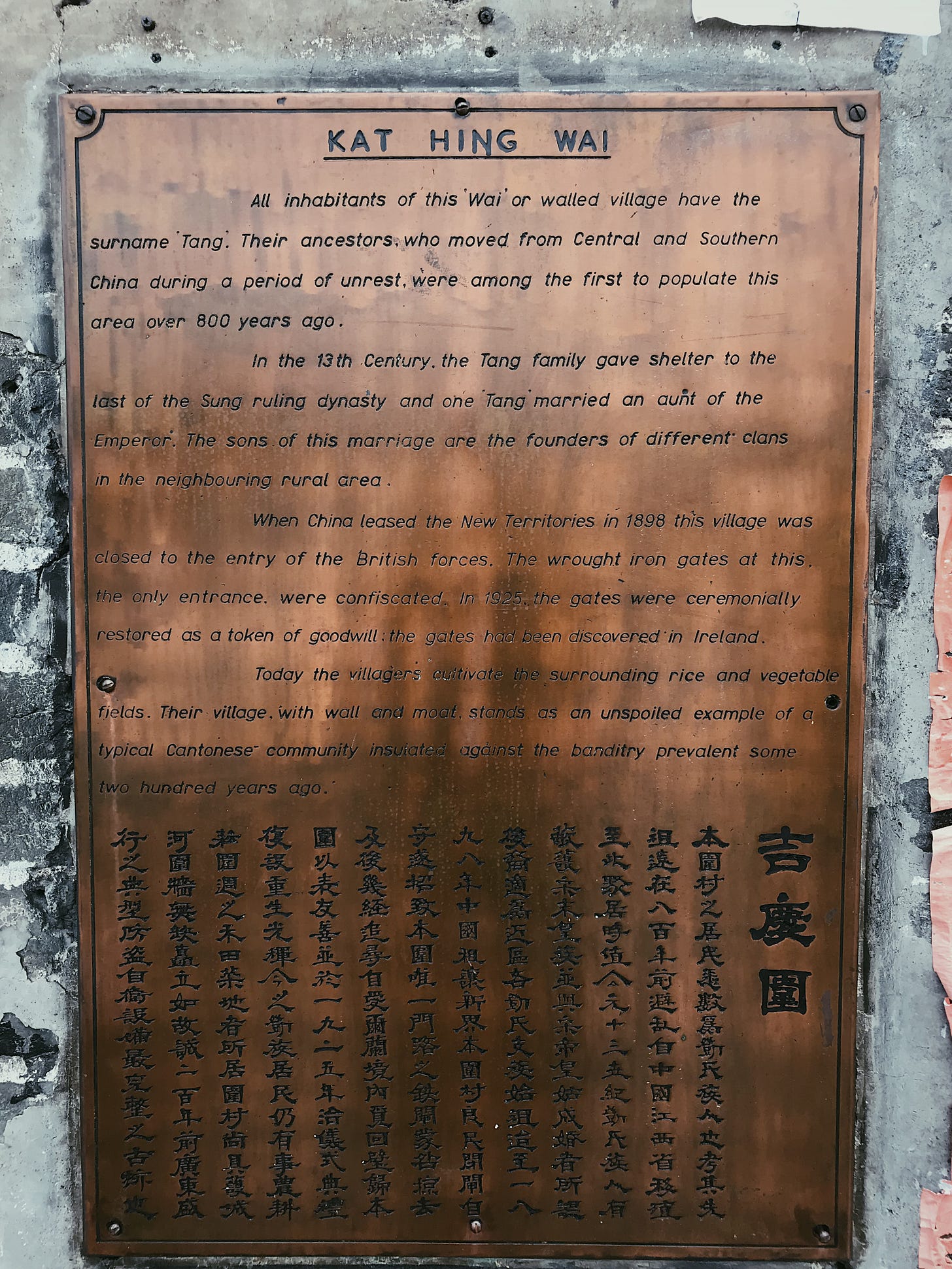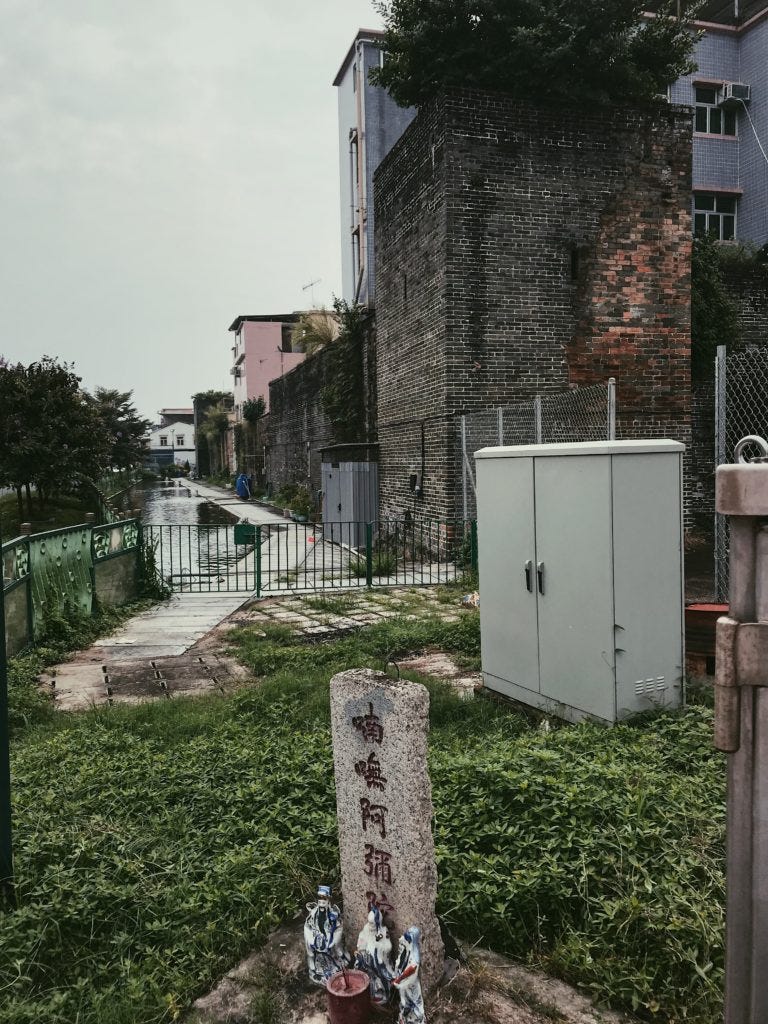My Arrival to Hong Kong
Or, "Here Not There"
There are few things I appreciate more than stepping outside and inhaling an all too familiar breath of California sunny-and-75°.
On my list of my favorite small joys, that falls in between “living spittin’ distance from the beach” and “shorts year round.”
In February 2018, I had been accepted into graduate school in California, affording me the opportunity to extend my stay in my familiar gaiety following graduation — I could continue my schooling, maintain proximity with my friends and family, and preserve the California life I had worked so hard to align just the way I wanted.
But then a funny thing happened: I decided to move to Hong Kong.
I had fallen so deep into my small California pleasantries and routine that a change sprung both from necessity and tedium.
Naturally, it made all the sense in the world to replace my list of small joys with a list of unfamiliar, uncomfortable, and seemingly malicious trifles: 98% humidity, rampant typhoons, and an impetuous pace of life that will forever be understated by the adjectives attempting to describe it — what a different place it would be if people in Hong Kong were only moving in an urgent, hasty whirlwind!
There are few moments out in the city where someone is not breathing onto your neck trying to push you to move faster. It’s been an adjustment to remember that the feeling of being rushed is an impersonal way of life rather than an intentional dig at my existence.
I feel okay about adapting to the high speed living of Hong Kong, but I still can’t grasp how massive the mosquitoes are. Last I checked, a mosquito is a small, fly-type bug— not a state bird (I guess nobody told the ones in Hong Kong). The mosquitoes paired with the blunt humidity seem to collaborate to overlay your skin with a thin, disagreeable film of clammy sweat and polka-dotted inflammation.
Ostensibly, I'm here in Hong Kong to teach English to kids. I've been a college tutor for some years now in both sciences and writing, and I've spent four consecutive summers working with kids at a summer camp; combining the two seemed to make sense. I enjoy teaching, and I enjoy working with kids.
Living in Hong Kong, for me, affords so much opportunity outside of my actual job. Being able to speak Cantonese opens up many doors for me as an expatriate in Hong Kong and, for the first time, I live in close proximity to my extended family. Many things aligned in my favor with my move to Hong Kong — and I haven’t even began to explain my plans to chase that elusive and expensive mistress that is wanderlust.
I was last in Hong Kong in January 2016. It's been just over two and a half years since my last visit. My mom was born and raised in Hong Kong before moving to California when she met and married my dad, though many of my aunts and uncles and cousins still live here. I say “many” because I don’t have a specific number; the Tang family— my mom’s maiden name— reaches back through centuries of recorded history. The Tang family has lived and still lives in and around the walled village Kut Hing Wai in Kam Tin, Hong Kong.
Twelve miles north of downtown Hong Kong, the walled village, where my mom grew up and where I moved into this week with my aunt and uncle, is some 500 years old and surrounded by a real-life moat furnished with tall, colorful towers overlooking the 20-foot brick walls. Kut Hing Wai imparts an ancient snapshot brimming with the history of the Tang clan that first settled in the New Territories of Hong Kong.
Even today, the name “Tang” still holds gravity in and around the New Territories. The elders living in the village all know my mother from when she was a child growing up here. If I walk by elders within the village, I can introduce myself simply as my mother, Mei Wah’s, son, and they will instantly recognize who I am despite having never met before.
Kat Hing Wai does not exude a “small town” feel that many Americans — including myself— grew up in, but instead it conveys something far more snug. The familiar intimacy with which village residents know each other extends many degrees beyond schoolyard stories and grocery store run-ins; without missing a beat, someone can explain how they used to know your great-great-something’s family friend’s dog.
It seems each person living here, Tang or not, has a deep-rooted ancestral overlap and personal insight into every other Kat Hing Wai resident.
Somehow I find myself living in the heart of my rich family history, moseying along the same roads my great-great-great-great-great-great ancestors paved before me, and frequenting the same shops and street markets my mother and innumerable Tang’s so often visited.
I’m happy to be living here in Kat Hing Wai, as there is much more room to live than there is among the skyscrapers of Kowloon or Hong Kong Island. I have my own room in my uncle’s three-story house — its somewhat of a spacious luxury compared to squeezing into a small, shared flat within the belly of a skyscraper.
Hong Kong's population per square mile has long passed the tier of "sardine-packed," but Kat Hing Wai resides on the rare and precious Hong Kong land that isn't weighed down by clusters of 100-story piles of steel and glass. The Tang family houses in the village designate a small, antiquated microcosm from a distant century that remain untouched by the modernity of the city.
Despite visiting Hong Kong during my childhood and listening to stories from my mother, I have only a modest grasp of the magnitude of my family tree. As I live here for the next year (and maybe beyond), I’ll learn more and more clues to my lineage and hopefully leave with a more complete understanding of who my ancestors were, where they lived, and who I am because of it.
Soon I’ll start my week of training for my English teaching job, and then my one year contract begins at the end of August. I’m excited to continue to learn and live and share as much of it as I can with you all.
We’ll rendezvous at our next stop.



